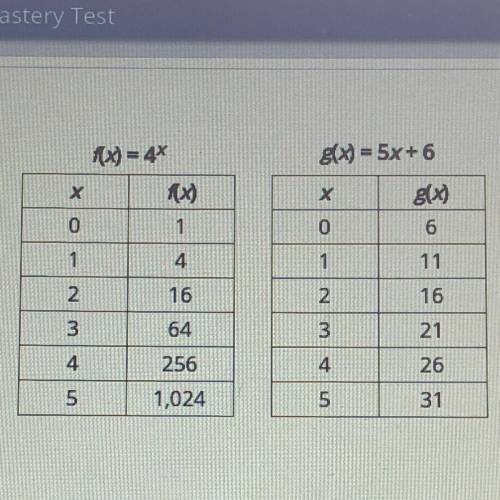Which statement is true?
O A. At x = 2, the rate of change of g(x) is equal to the rate of cha...

Mathematics, 02.04.2020 20:52, jasjas12
Which statement is true?
O A. At x = 2, the rate of change of g(x) is equal to the rate of change of Fx).
B. As x increases, the rate of change of f(x) exceeds the rate of change of g(x).
C. On every interval of x, the rate of change of f(X) exceeds the rate of change of g(x).
D. As x increases, the rate of change of g(x) exceeds the rate of change of f(x).


Answers: 1
Other questions on the subject: Mathematics

Mathematics, 21.06.2019 17:30, Justinoreilly71
The dolphins at the webster are fed 1/2 of a bucket of fish each day the sea otters are fed 1/2 as much fish as the dolphins how many buckets of fish are the sea fed each day? simplify you answer and write it as a proper fraction or as a whole or mixed number
Answers: 1

Mathematics, 21.06.2019 18:00, nathanowens121224
If 1/√5+1/√5+1=p+q√r , find the values of p, q and r
Answers: 2

Mathematics, 22.06.2019 01:30, datboyjulio21
Im so bad at fractions they are not my best math thing to work on
Answers: 1
Do you know the correct answer?
Questions in other subjects:




Physics, 17.07.2019 04:30



History, 17.07.2019 04:30








